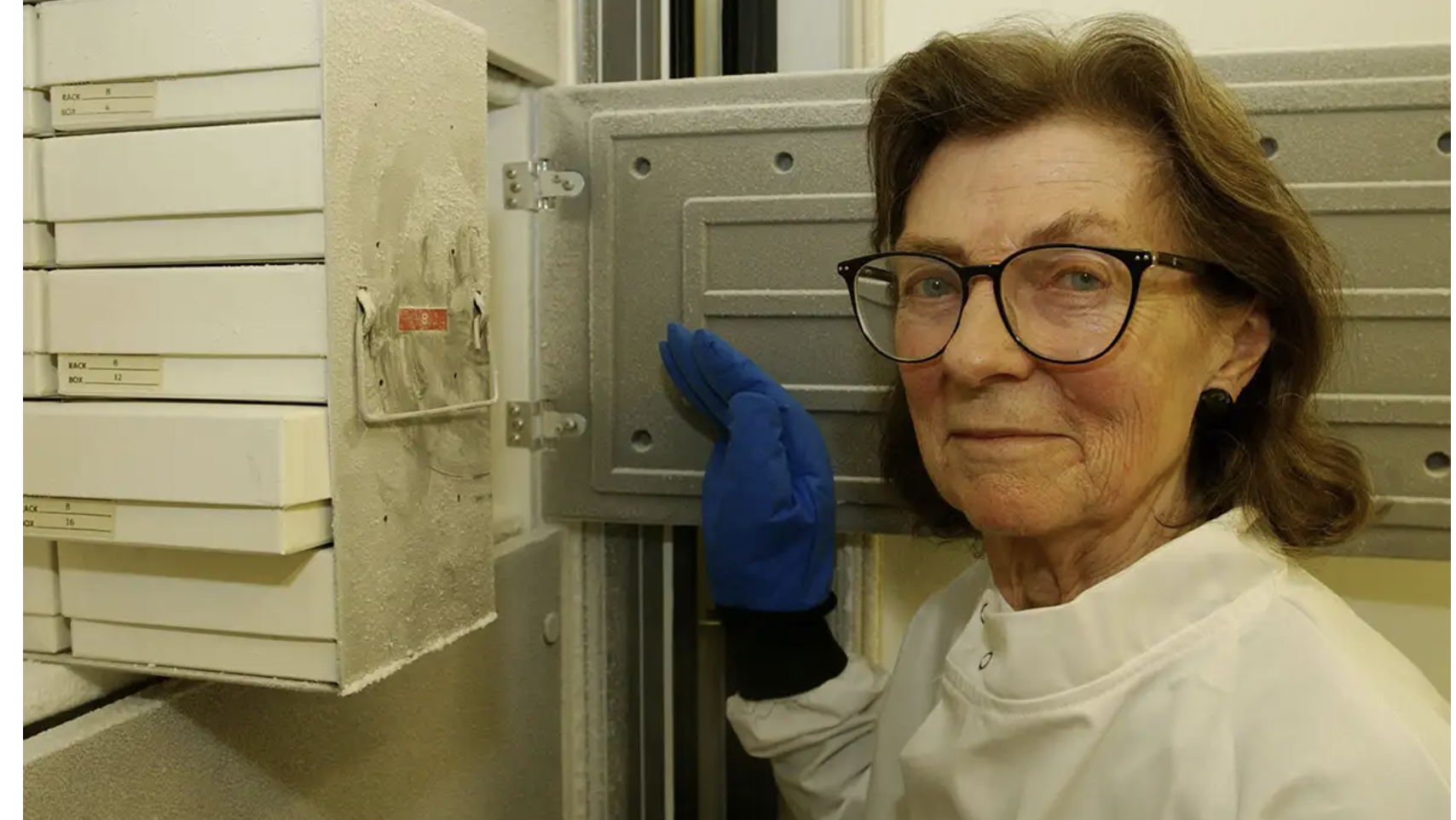
The Visionary Who Made Modern Families Possible
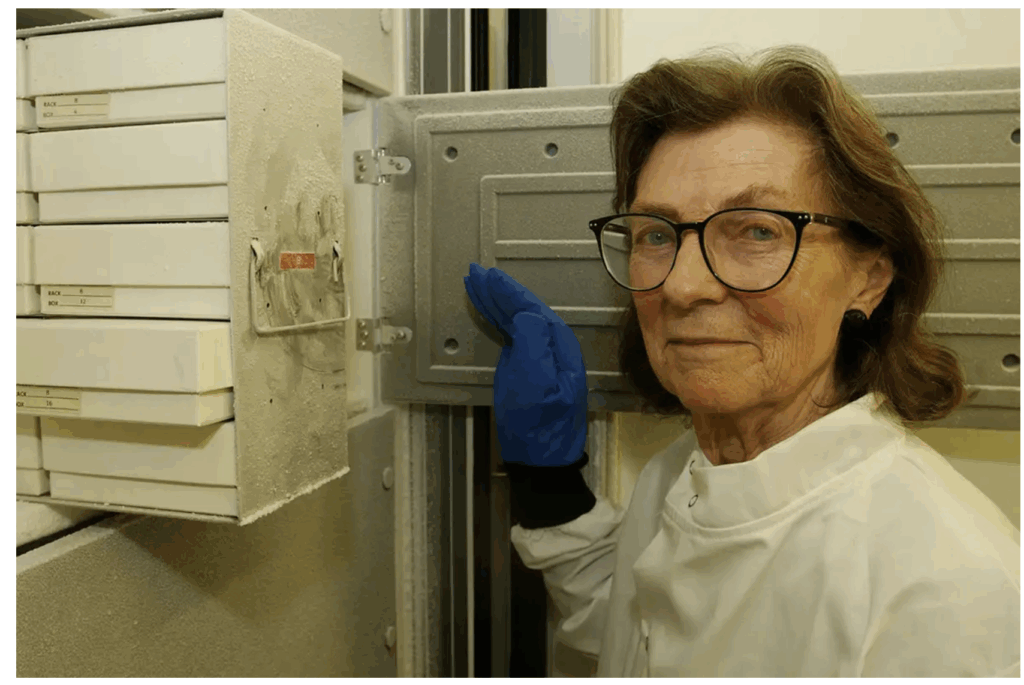
Anne McLaren was a groundbreaking British scientist whose research in the 1950s laid the essential groundwork for in vitro fertilization (IVF), helping millions of families worldwide conceive children. Beyond her laboratory achievements, she served as the first female officer of the Royal Society in its 331-year history, shaped critical ethical policies governing human reproduction, and championed women’s advancement in science throughout her distinguished career.
Key Facts About Anne McLaren:
- Born: April 26, 1927, London, England
- Died: July 7, 2007 (aged 80), in a car accident
- Major Achievement: Successful in vitro culture and uterine implantation of mouse embryos (1958), proving IVF was possible
- First IVF Baby: Louise Brown, born in 1978, 20 years after McLaren’s landmark research
- Royal Society: First woman officer (Foreign Secretary, 1991-1996)
- Honors: Dame Commander of the Order of the British Empire (DBE, 1993), Japan Prize (2002)
- Public Service: Served 10 years on the Human Fertilisation and Embryology Authority
Born into aristocratic privilege—her father was the 2nd Baron Aberconway—McLaren rejected her upper-crust upbringing to pursue science with fierce dedication. She combined rigorous laboratory work with passionate advocacy for responsible research ethics and gender equality, making her influence felt far beyond academic circles.
As R. Couri Hay, I’ve spent decades chronicling the lives of remarkable individuals who’ve shaped society from New York City to London, and anne mclaren represents a unique intersection of scientific brilliance and social impact that resonates deeply with my readers seeking stories of genuine influence. Her legacy touches families across continents, including countless couples in New York who’ve benefited from the reproductive technologies her research made possible.
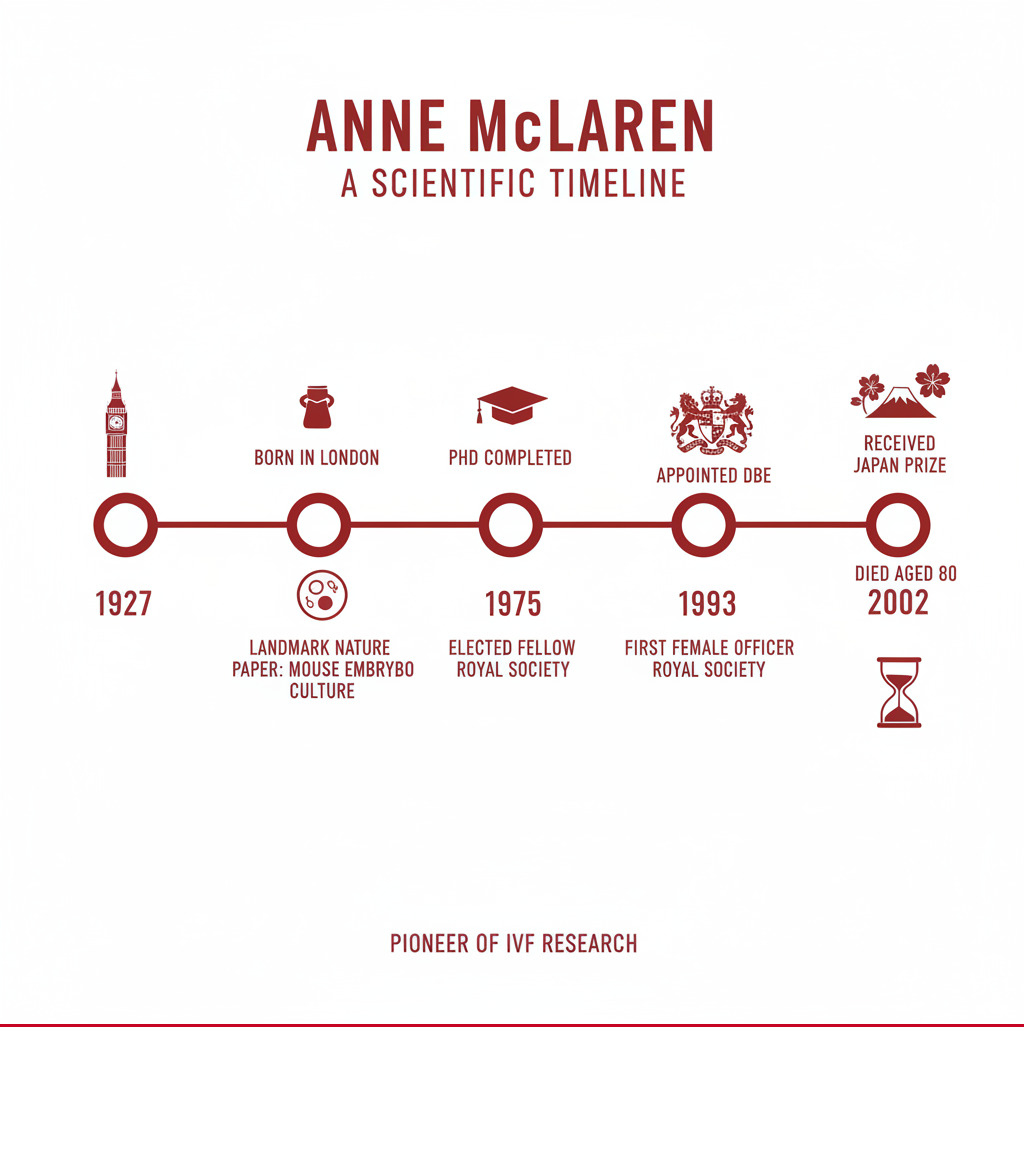
From Aristocracy to the Laboratory: Early Life and Education
The story of Anne McLaren begins in a world of privilege that she would ultimately reject in pursuit of something far more meaningful. Born Anne Laura Dorinthea McLaren on April 26, 1927, in London, she grew up as the daughter of Henry McLaren, 2nd Baron Aberconway, and Christabel Macnaghten. The family’s Welsh estate, Bodnant Garden, was a spectacular property—the kind of setting that would satisfy most people born into British aristocracy.
But Anne was different from the start. Even as a child, she showed little interest in the trappings of high society. Instead, she developed left-wing political views that would shape her entire approach to science and life. She believed deeply in using knowledge for the greater good, not personal glory.
Her path to science began in the most unexpected way. At just seven years old, she auditioned for and won a role in H.G. Wells’ film Things to Come. The movie featured mice being “flown to the Moon”—perhaps planting the first seeds of scientific curiosity in her young mind.
During World War II, Anne displayed the independent streak that would define her career. She secretly built a chicken coop and named her hens Alpha, Beta, Gamma, and Delta. It was a small act, but it revealed her practical nature and early fascination with the natural world.
After attending private schools—interrupted by the war—Anne enrolled at Lady Margaret Hall, Oxford, to study zoology. She later joked that she chose biology because the exam papers “looked much easier” than English literature. It was a humble explanation for a decision that would change reproductive medicine forever.
Anne continued her post-graduate work at University College London, earning her Ph.D. in 1952. During this time, she met and married Donald Michie, a fellow scientist. Their early scientific collaboration focused on skeletal development in mouse embryos. Though the marriage ended amicably in 1959, this partnership was crucial for launching her research career.
Balancing science with family life wasn’t easy. Anne’s mother, Christabel, provided essential support, taking pride in her daughter’s ability to manage both motherhood and groundbreaking research. These personal experiences would later fuel Anne’s passionate advocacy for better childcare and support systems for women in science—an issue that remains relevant today, whether you’re a researcher in London or New York City.
Anne never lost her down-to-earth quality. She once attended international conferences wearing worn plimsoles with her big toes peeking through—proof that she cared more about the science than appearances. Her left-wing political views extended to activism, including participation in the “Ban the Bomb” campaign and refusing to work with institutions she suspected of biological warfare research.
From aristocratic estate to laboratory bench, anne mclaren carved a path guided by principle, curiosity, and an unwavering belief that science should serve humanity.
The Scientific Breakthroughs of Anne McLaren
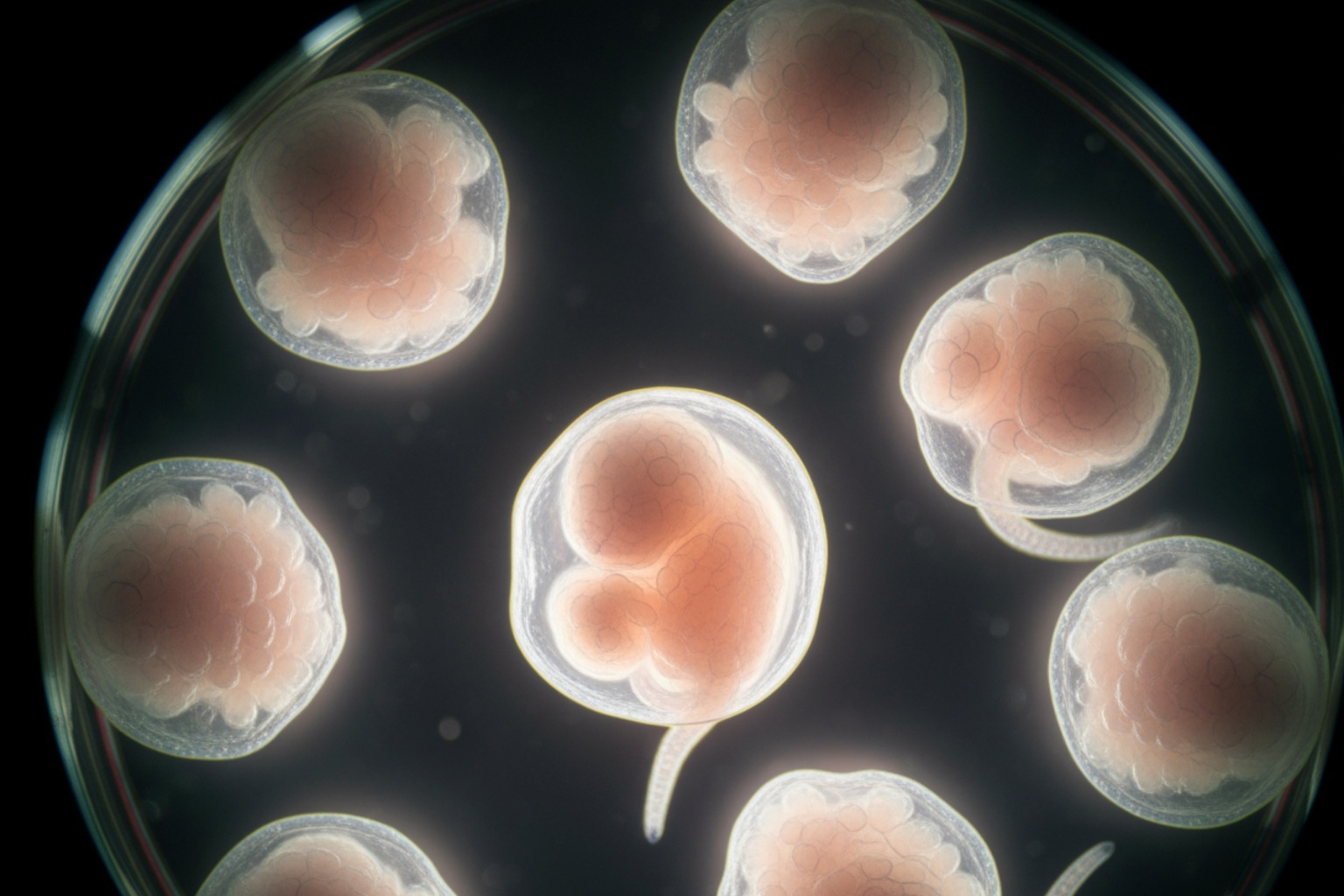
The true measure of Anne McLaren‘s genius lies in her groundbreaking scientific contributions, which fundamentally reshaped our understanding of how life begins and develops. Her tireless work in the laboratory provided the critical insights needed to open up the mysteries of early embryonic development, culminating in findies that would eventually benefit millions seeking to start families, whether in London, New York City, or anywhere else in the world.
The Foundation of IVF: The 1958 Nature Paper
If we were to pinpoint Anne McLaren‘s single most transformative scientific achievement, it would undoubtedly be her pioneering work on in vitro fertilization. Her landmark 1958 paper in Nature, conducted with John Biggers at the Royal Veterinary College in London, changed the course of reproductive medicine forever.
At the time, many scientists believed that mammalian embryos simply couldn’t survive outside the womb. The prevailing wisdom suggested that the uterine environment was so specialized, so essential, that embryos would fail if removed from it. McLaren and Biggers set out to prove otherwise.
The challenges they faced were immense. They needed to develop the right culture medium to sustain embryonic growth—getting the nutrients, temperature, and chemical balance just right. They had to master the delicate technique of manipulating mouse embryos so tiny they were barely visible to the naked eye. And perhaps most critically, they needed to prove that these cultured embryos could actually develop into healthy offspring.
Their breakthrough was neat in its simplicity yet in its implications. They successfully cultured mouse embryos in vitro—literally “in glass,” meaning in laboratory glassware—for a brief period. Then came the crucial test: they transferred these cultured embryos into the uterus of surrogate female mice. The result? Healthy mouse pups were born.
This was the proof of principle that human IVF needed. While these were mouse embryos, not human ones, the biological principles were fundamentally the same across mammalian species. McLaren had demonstrated unequivocally that embryos could be manipulated outside the body and still develop into viable offspring.
Twenty years later, in 1978, Louise Brown became the first human baby born through IVF—a direct result of the scientific pathway blazed by Anne McLaren and Biggers. The impact on fertility treatments has been nothing short of transformative. Before this research, infertility was often an impossible barrier for couples dreaming of children. Today, IVF is a routine medical procedure that has enabled countless families across the globe, including thousands right here in New York City, to experience the joy of parenthood.
Solving Development: Chimeras and Germ Cells
Anne McLaren‘s scientific curiosity extended far beyond IVF. Following her groundbreaking embryo transfer work, she moved to the University of Edinburgh, where she started on equally fascinating research into mammalian chimeras.
Chimeras, in this scientific context, are organisms composed of cells from two genetically distinct embryos. Imagine taking two very early mouse embryos, each with its own unique genetic blueprint, and carefully fusing them together. If successful, these fused embryos develop into a single mouse that’s essentially a living mosaic—part one genetic identity, part another.
This research might sound like science fiction, but it provided invaluable insights into how embryonic development actually works. McLaren’s work on creating and studying these chimeras revealed crucial information about cell lineage—how cells “decide” what to become—and how different cell types communicate with each other during development. It showed just how flexible and adaptable early embryonic cells really are.
Beyond chimeras, McLaren dove deeply into the study of primordial germ cells (PGCs)—the embryonic precursors to sperm and egg cells. Understanding how these cells develop is fundamental to reproductive biology. Her research focused on detecting, isolating, and tracking these cells as they differentiated. She explored the intricate mechanisms of sex determination in mammals at the cellular level, including questions about X-chromosome activity in germ cells.
This work was foundational for later research into stem cells and their potential for treating human diseases, as detailed in her Biography of Anne Laura Dorinthea McLaren. Her ability to observe and manipulate these early developmental stages opened entirely new avenues of research that continue to influence developmental biology today.
A Lasting Contribution from Anne McLaren: The Frozen Ark
Anne McLaren‘s vision extended beyond human reproduction to the broader conservation of life on Earth. In a testament to her foresight and deep commitment to biodiversity, she co-founded the Frozen Ark project—an ambitious initiative to preserve the genetic material of endangered species.
The concept is both simple and profound. By collecting and storing DNA, cells, and reproductive material from animals threatened with extinction, scientists create a “genetic backup” for species at risk. As habitats shrink and climate change accelerates, many animals are disappearing at an alarming rate. The Frozen Ark provides a crucial safety net against complete biological loss.
This genetic repository could potentially be used for future breeding programs, advanced conservation efforts, or simply for scientific study to better understand these animals and the threats they face. McLaren understood that preserving genetic diversity wasn’t just about saving individual species—it was about maintaining the intricate web of life that sustains our planet.
Her involvement with the Frozen Ark showcases her holistic view of science and its responsibilities. It wasn’t enough for her to understand how life begins; she also championed efforts to ensure that life, in all its magnificent forms, continues to thrive. More detailed information about the Frozen Ark reveals how this vital mission continues today, a powerful part of Anne McLaren‘s enduring legacy.
A Voice for Science in Society: Ethics and Public Policy
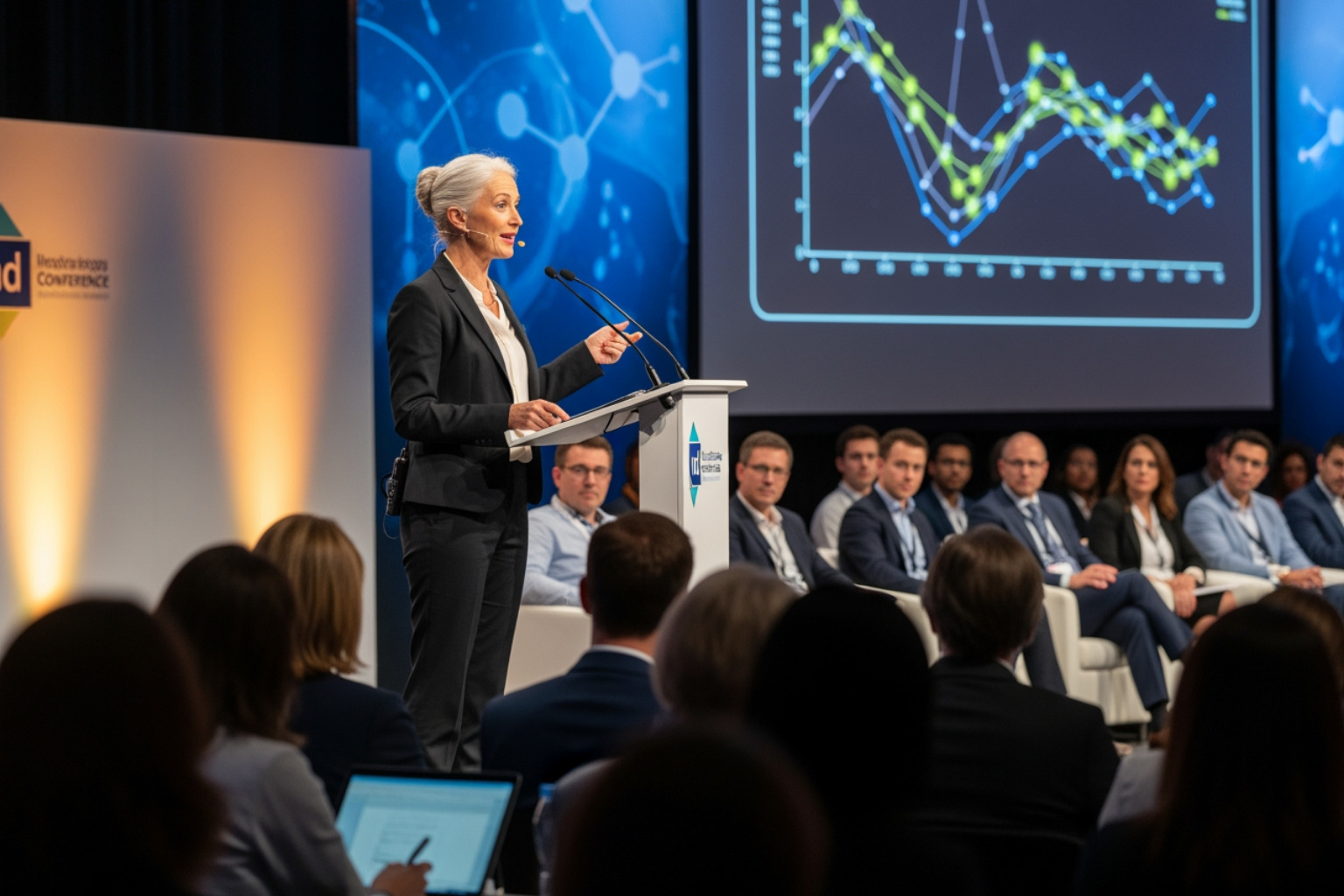
Anne McLaren possessed a rare combination of scientific brilliance and social conscience. While many researchers are content to let their work speak for itself, she understood that science—especially research involving human reproduction—demands active public engagement. She stepped beyond the laboratory walls to become one of Britain’s most respected public intellectuals, helping society grapple with the profound ethical questions her research had raised.
Her ability to translate complex scientific concepts into language anyone could understand made her invaluable in policy discussions. She didn’t speak down to people or hide behind jargon. Instead, she brought clarity and compassion to debates that often became heated and polarized. This combination of scientific expertise and genuine concern for humanity’s welfare made her an essential voice in shaping how we think about reproductive technology today.
Shaping UK Policy: The Warnock Committee and HFEA
When Louise Brown arrived in 1978 as the world’s first IVF baby, celebration quickly gave way to anxiety. The medical miracle had created what experts called a “legal vacuum”—suddenly, there were no rules governing this brave new world of assisted reproduction. Could scientists do whatever they wanted with embryos? Who had rights to frozen embryos after divorce? What about using donor eggs or sperm? These questions kept ethicists, lawmakers, and ordinary citizens awake at night.
The British government responded in 1982 by convening the Warnock Committee, named for its chair, philosopher Mary Warnock. The committee’s mission was to recommend sensible regulations for human fertilization and embryology research. Anne McLaren was appointed as a key member, bringing her best scientific knowledge to the table.
Her contributions proved essential. While philosophers debated abstract principles, McLaren explained what was actually possible in the laboratory and what the biological realities meant for ethical decision-making. She helped establish the famous 14-day rule—a limit stating that embryos could only be cultured for research up to 14 days after fertilization. This timeframe was chosen carefully, as it’s before the primitive streak appears, the stage when an embryo can no longer split into twins and when the nervous system begins forming.
One charming story from her committee service reveals her thoughtful approach. She successfully argued that the term “assisted reproduction” should replace “artificial reproduction” in all official documents. Her reasoning was simple: these technologies weren’t creating something artificial or fake—they were helping couples achieve something beautifully natural. That small word change made a profound difference in how people understood IVF.
The committee’s work led directly to the Human Fertilisation and Embryology Act of 1990, groundbreaking legislation that created the Human Fertilisation and Embryology Authority (HFEA). McLaren then served on the HFEA for a decade, from 1991 to 2001, helping regulate fertility clinics and embryo research across the United Kingdom. The HFEA became the world’s first independent regulatory body of its kind, setting standards that influenced policies worldwide—including regulations that would eventually shape fertility practices in New York City and across the United States.
Her service demonstrated something crucial: scientists have a responsibility to help society understand and govern new technologies. McLaren never shied from this duty, even when it meant countless hours in committee meetings rather than the laboratory she loved.
Championing Women in Science: A Trailblazer at The Royal Society
Anne McLaren didn’t just advance science—she fought tirelessly to ensure women could participate fully in scientific life. Her own journey had shown her the obstacles women faced, and she was determined to remove them for future generations.
In 1975, she was elected a Fellow of the Royal Society, Britain’s most prestigious scientific institution. But her most significant achievement came in 1991 when she became the organization’s Foreign Secretary, making her the first woman to hold any office in the Royal Society’s 331-year history. Think about that for a moment: an institution founded in 1660 had never had a single female officer until Anne McLaren broke through in 1991. She later served as Vice President from 1992 to 1996, cementing her role as a trailblazer.
Her presence at the top wasn’t just symbolic—it opened doors and changed minds about what women could achieve in science. But McLaren wasn’t content with personal success. She used her platform to advocate systematically for women throughout scientific careers.
Anne co-founded and led the Association for Women in Science and Engineering (AWISE), working to dismantle the barriers that kept talented women from reaching their potential. A passionate spokesperson for practical solutions: better childcare support for working mothers, flexible work arrangements that acknowledged family responsibilities, and mentorship programs connecting young women scientists with experienced guides. Having raised her own children while building a world-class scientific career, she understood these challenges intimately.
McLaren was particularly vocal about the “leaky pipeline” problem—the phenomenon where women steadily drop out of scientific careers at each stage, from graduate school through professorships. She argued that this wasn’t about women’s capabilities but about institutional failures to support them properly. Her advocacy helped shift conversations in universities across Britain and beyond, including institutions in New York that were wrestling with similar diversity challenges.
Today, the Anne McLaren Fellowships at the University of Nottingham support outstanding female postdoctoral researchers in science, technology, engineering, and medicine. These fellowships help early-career women establish themselves in UK academia, providing the crucial support McLaren knew was essential. It’s a fitting tribute to someone who understood that advancing women in science requires more than good intentions—it demands strategic planning and sustained commitment, much like the thoughtful strategic planning services that help organizations achieve their most important goals.
Frequently Asked Questions about Anne McLaren
Over the years, I’ve found that certain questions about Anne McLaren come up time and again, whether I’m at a dinner party in New York City or speaking with readers who’ve finded her story. Let me address the most common ones here, because understanding her legacy means understanding these pivotal moments in her life.
What was Anne McLaren’s most significant scientific contribution?
If you ask me to point to one achievement that changed everything, it would be Anne McLaren‘s 1958 research with John Biggers. This was the work that proved mammalian embryos could be cultured outside the body and successfully develop after being transferred to a surrogate mother. Think about that for a moment—before this, the idea of growing embryos in a laboratory dish seemed like pure science fiction.
Their meticulous experiments with mouse embryos provided the crucial proof of concept that made human IVF possible. This wasn’t just theoretical work; it was the fundamental breakthrough that led directly to the birth of Louise Brown, the first human IVF baby, two decades later in 1978. Today, countless families in New York and around the world have been able to have children thanks to the pathway McLaren blazed in that laboratory. Her work transformed infertility from an impossible barrier into a treatable condition.
How did Anne McLaren become a Dame?
In 1993, Anne McLaren was appointed a Dame Commander of the Order of the British Empire (DBE), one of the highest honors in the British system. This wasn’t just about a single findy—the title acknowledged her entire body of work. Her groundbreaking research, her leadership in navigating complex ethical discussions around human reproduction, and her trailblazing role for women in science all contributed to this prestigious recognition.
The timing is worth noting: by 1993, she had already served on the Warnock Committee, helped establish the HFEA, and become the first female officer of the Royal Society. The DBE was the British establishment’s way of saying, “Your contributions have fundamentally shaped our society.” And they were absolutely right.
What is the connection between Anne McLaren and the Royal Society?
Anne McLaren‘s relationship with the Royal Society tells the story of both her scientific excellence and her role as a barrier-breaker. She was first elected a Fellow of the Royal Society in 1975, a significant recognition that placed her among Britain’s most distinguished scientists. But being a Fellow was just the beginning.
In 1991, she made history in the most spectacular way: she became the first-ever female officer of the Royal Society when she was appointed Foreign Secretary. Consider that the Royal Society was founded in 1660—that’s 331 years of male-only leadership before McLaren shattered that glass ceiling. She held the Foreign Secretary position until 1996, and also served as Vice President from 1992 to 1996.
This wasn’t just a symbolic achievement, though it certainly sent a powerful message to aspiring female scientists everywhere, including here in New York where young women were watching these developments closely. McLaren used her platform within the Royal Society to actively advocate for women in science, pushing for policy changes and mentorship programs that would make it easier for the next generation to follow in her footsteps.
Conclusion: The Enduring Legacy of a Scientific Dame
When we look back at the extraordinary life of Anne McLaren, what strikes me most is how seamlessly she wove together so many different threads—science, ethics, advocacy, and conservation—into a single, remarkable mix of achievement. This wasn’t someone who simply excelled in one narrow field and called it a day. She was a force of nature who understood that true impact requires engagement on multiple fronts.
Her scientific legacy alone would have been enough to secure her place in history. That groundbreaking 1958 Nature paper with John Biggers didn’t just advance academic knowledge—it fundamentally changed what was possible for families struggling with infertility. Today, millions of people around the world, including countless families right here in New York City, owe their very existence to the pathway she pioneered. When Louise Brown was born in 1978, she wasn’t just the first IVF baby; she was living proof that anne mclaren‘s vision and meticulous research had opened a door that many thought would remain forever closed.
But Anne McLaren understood something crucial that many brilliant scientists miss: findy without responsibility is dangerous. That’s why her work on the Warnock Committee and her decade of service on the Human Fertilisation and Embryology Authority mattered so profoundly. She helped build the ethical guardrails that allowed reproductive medicine to advance safely and thoughtfully. The famous 14-day rule for embryo research, her advocacy for calling these technologies “assisted” rather than “artificial” reproduction—these weren’t just semantic debates. They shaped how society understood and acceptd these new possibilities.
Her commitment to opening doors for women in science was equally transformative. When she became the first female officer of the Royal Society in 1991, breaking a 330-year male monopoly, she didn’t just collect an impressive title. She used that platform to advocate tirelessly for better childcare support, mentorship programs, and structural changes that would allow women to thrive in demanding scientific careers. The Anne McLaren Fellowships that support early-career female researchers today are a living testament to her belief that science is stronger when everyone has a seat at the table.
And then there’s the Frozen Ark project, which shows us yet another dimension of her vision. While helping humans create new life through IVF, she was simultaneously working to preserve the genetic heritage of endangered species facing extinction. It’s this holistic view—understanding that all life is interconnected and worthy of protection—that makes her legacy so rich and multifaceted.
The story of anne mclaren, from aristocratic beginnings at Bodnant Garden to world-changing findies in modest laboratories, is exactly the kind of narrative that captivates us at R. Couri Hay Columns. Here was someone who rejected the comfortable privilege of her birth to pursue something far more meaningful—knowledge that would benefit humanity and the natural world. She attended conferences in worn-out shoes with her toes peeking through because she cared more about the science than the superficial trappings of prestige. That’s the kind of authentic influence that truly matters.
Her tragic death in 2007, in a car accident that also claimed her former husband and lifelong collaborator Donald Michie, was a profound loss to the scientific community and beyond. Yet her influence continues to ripple outward, touching families who conceive through IVF, researchers who benefit from the ethical frameworks she helped establish, women scientists who walk through doors she opened, and endangered species whose genetic material is preserved thanks to her foresight.
Anne McLaren showed us that one person, armed with curiosity, dedication, and a deep sense of responsibility, can genuinely change the world. Her legacy reminds us that the most meaningful contributions often come from those who refuse to stay in their lane, who insist on engaging with the broader implications of their work, and who champion others along the way. To explore more stories of influential figures in our society columns and find other remarkable individuals who’ve shaped our world in unexpected ways, we invite you to continue your journey with us.


